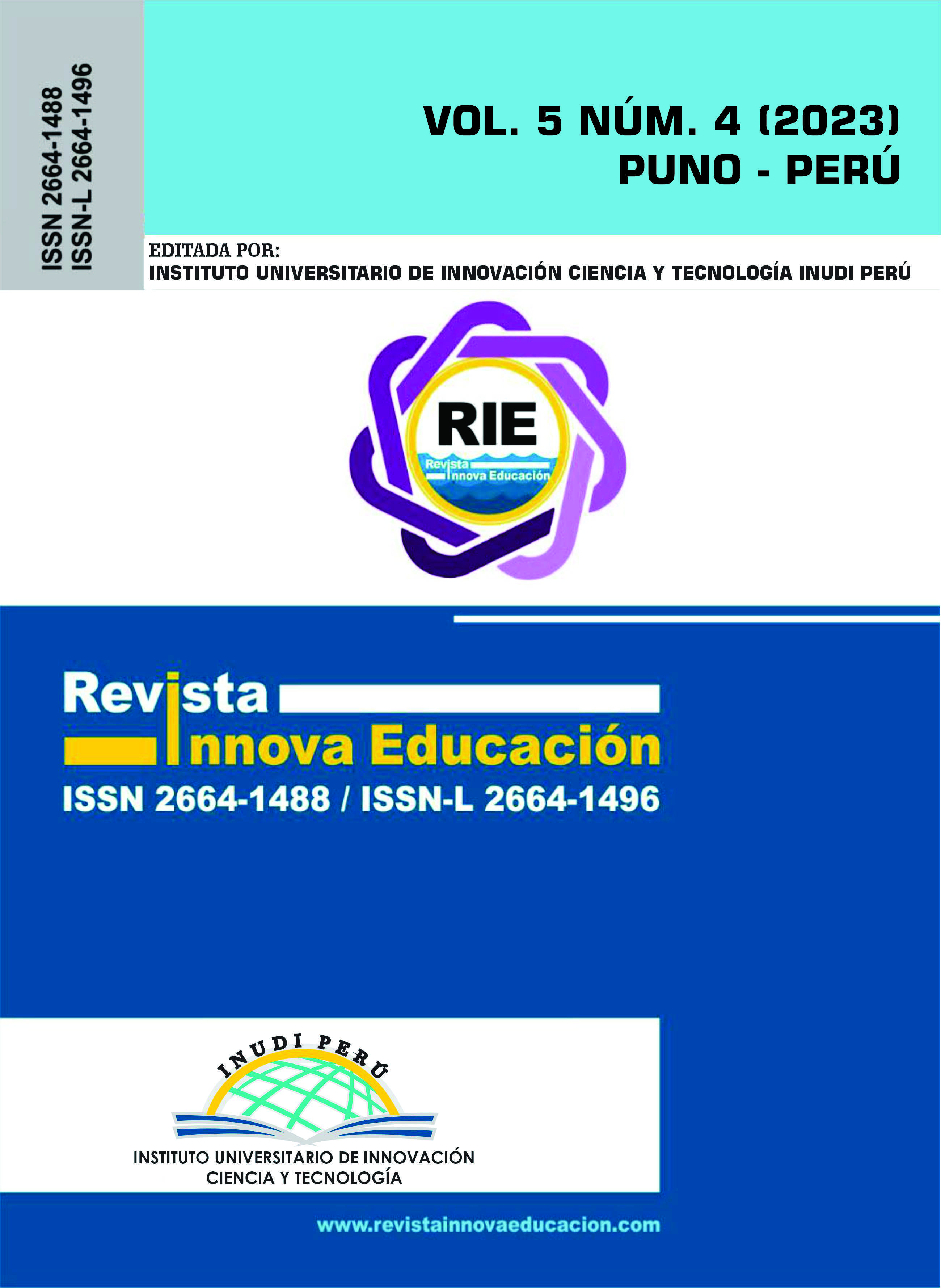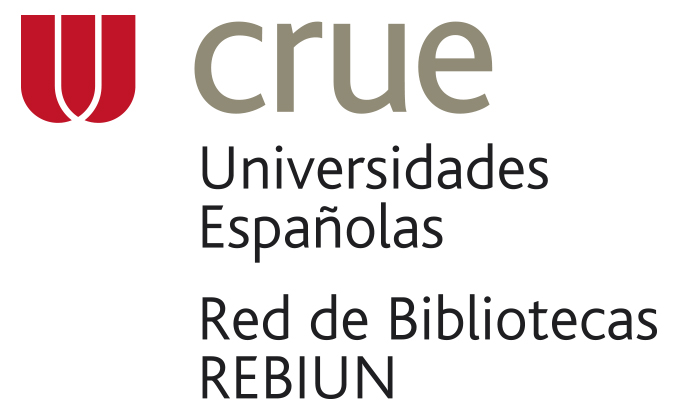Propiedades psicométricas de la Escala de Ciberbullying para agresores durante la educación virtual
DOI:
https://doi.org/10.35622/j.rie.2023.05v.010Palabras clave:
adolescentes, análisis factorial, ciberbullying, propiedades psicométricas, agresión virtualResumen
Se analizan las propiedades psicométricas de la Escala de Ciberbullying para Agresores en adolescentes peruanos. Es una investigación cuantitativa, no experimental, de corte transversal, y diseño instrumental, en el que participaron 1019 adolescentes de ambos sexos, estudiantes de establecimientos educativos públicos de Nivel Secundario, cuyas edades oscilaron de 12 a 17 (M=14; DE=1.56). Los resultados del análisis factorial confirmatorio fueron χ2 = 103.725, p = 0.000, CFI = 0.965, TLI = 0.951 y RMSEA = 0.064. Además, se reporta validez convergente, que muestra correlación moderada entre el ciberbullying y la ciberagresión (r= 0.548; p= 0.00) y un Coeficiente de Omega = 0.94. Concluyendo, la escala queda constituida por 8 ítems que miden el Ciberbullying ocasionado por agresores en un ambiente educativo ya sea presencial o virtual.
Referencias
Acuña, M. I., Alonso, D., Reyna, C., & Brussino, S. (2022). Estudio de la Escala Breve de Personalidad (EBP) desde la Teoría Clásica de los Test y la Teoría de Respuesta al Ítem. Revista Iberoamericana de Diagnóstico y Evaluación Psicológica, 64(3), 185-199. https://doi.org/10.21865/RIDEP64.3.14 DOI: https://doi.org/10.21865/RIDEP64.3.14
Arnaiz, P., Cerezo, F., Giménez, A., & Maquilón, J. (2016). Conductas de ciberadicción y experiencias de cyberbullying entre adolescentes. Anales de Psicología, 32(3), 761-769. https://www.redalyc.org/pdf/167/16746507017.pdf DOI: https://doi.org/10.6018/analesps.32.3.217461
Ato, M., López, J., & Benavente, A. (2013). Un sistema de clasificación de los diseños de investigación en psicología. Anales de Psicología, 29(3), 1038-1059. https://revistas.um.es/analesps/article/view/analesps.29.3.178511/152221 DOI: https://doi.org/10.6018/analesps.29.3.178511
Bentler, P. (1992). On the fit of models to covariances and methodology. Psychological Bulletin, 112(3), 400-404. https://doi.org/10.1037/0033-2909.112.3.400 DOI: https://doi.org/10.1037//0033-2909.112.3.400
Best, S., Ré, N., Mc Guckin, C., Corcoran, L., & Casasnovas, A. (2017). Retos y desafíos de la adaptación transcultural del cuestionario de ciberagresión en una muestra de estudiantes argentinos. Subjetividad y Procesos Cognitivos, 21(2), 17-41. http://www.scielo.org.ar/pdf/spc/v21n2/v21n2a01.pdf DOI: https://doi.org/10.35670/1667-4545.v21.n2.34389
Bojorquez-Paucar, J., Cáceres-Julcahuanca, L., & Barboza-Palomino, M. (2022). Propiedades psicométricas de la Escala de Personalidad Proactiva en profesores de escuelas de Lima (Perú). CES PSICOLOGÍA, 15(3), 166-179. https://doi.org/10.21615/cesp.6216 DOI: https://doi.org/10.21615/cesp.6216
Brighi, A., Menin, D., Skrzypiec, G., & Guarini, A. (2019). Young, bullying, and connected. Common pathways to cyberbullying and problematic internet use in adolescence. Frontiers in Psychology, 1467, 10. https://doi.org/10.3389/fpsyg.2019.01467 DOI: https://doi.org/10.3389/fpsyg.2019.01467
Buelga, S., & Pons, J. (2012). Agresiones entre Adolescentes a través del Teléfono Móvil y de Internet Aggressions among Adolescents through Mobile Phones and the Internet. Psychosocial Intervention, 21(1), 91-101. https://doi.org/10.5093/in2012v21n1a2 DOI: https://doi.org/10.5093/in2012v21n1a2
Bullying sin Fronteras. (2023). Primer Estudio sobre el Cyberbullying en América Latina. 2022/2023. Bullying sin Fronteras. https://shorturl.at/dhBHK
Byrne, B. (2012). Structural equation modeling with Mplus: Basic concepts, applications, and programming. Psicothema, 24(2), 343-344. https://doi.org/10.4324/9780203807644 DOI: https://doi.org/10.4324/9780203807644
Byrne, B. (2016). Structural equation modeling with AMOS: basic concepts, applications, and programming (Third Edition, Vol. 3). Routledge. https://doi.org/https://doi.org/10.4324/9781315757421 DOI: https://doi.org/10.4324/9781315757421
Calvete, E., Orue, I., Estévez, A., Villardón, L., & Padilla, P. (2010). Cyberbullying in adolescents: Modalities and aggressors’ profile. Computers in human Behavior, 26, 1128-1165. https://doi.org/10.1016/j.chb.2010.03.017 DOI: https://doi.org/10.1016/j.chb.2010.03.017
Cava, M.-J., & Buelga, S. (2018). Propiedades psicométricas de la Escala de Ciber-Violencia en Parejas Adolescentes (Cib-VPA). Revista Suma Psicología, 25, 51-61. https://doi.org/10.14349/sumapsi.2018.v25.n1.6 DOI: https://doi.org/10.14349/sumapsi.2018.v25.n1.6
Cénat, J., Smith, K., Hébert, M., & Derivois, D. (2019). Polyvictimization and cybervictimization among college students from France: The mediation role of psychological distress and resilience. Journal of Interpersonal Violence, 1-20. https://doi.org/10.1177/0886260519854554 DOI: https://doi.org/10.1177/0886260519854554
Cortés, A. (2020). Acoso escolar, ciberacoso y las nuevas tecnologías de la información y la comunicación. Revista Cubana de Medicina General Integral, 36(3), 1-9. https://orcid.org/0000-0001-8061-1845
Elosua, P. (2003). Sobre la validez de los tests. Psicothema, 15(2), 315-321. https://www.redalyc.org/pdf/727/72715225.pdf
Escobar-Pérez, J., & Cuervo-Martínez, Á. (2008). Validez de contenido y juicio de expertos: Una aproximación a su utilización. Avances en Medición, 6, 27-36. https://shorturl.at/ayzO8
Estévez, E., Cañas, E., Estévez, J., & Povedano, A. (2020). Continuity and overlap of roles in victims and aggressors of bullying and cyberbullying in adolescence: A systematic review. International Journal of Environmental Research and Public Health, 7452, 17. https://doi.org/10.3390/IJERPH17207452 DOI: https://doi.org/10.3390/ijerph17207452
Falla, D., Ortega-Ruiz, R., Runions, K., & Romera, E. M. (2022). Why do Victims become Perpetrators of Peer Bullying? Moral Disengagement in the Cycle of Violence. Youth and Society, 54(3), 397-418. https://doi.org/10.1177/0044118X20973702 DOI: https://doi.org/10.1177/0044118X20973702
Ferrando, P. J., Lorenzo-Seva, U., Hernández-Dorado, A., & Muñiz, J. (2022). Decálogo para el Análisis Factorial de los Ítems de un Test. Psicothema, 34(1), 7-17. https://doi.org/10.7334/psicothema2021.456
Fondo de las Naciones Unidas para la Infancia [UNICEF]. (9 de abril de 2019). 1 de cada 3 jóvenes dice haber sufrido ciberacoso. UNICEF Noticias. https://shorturl.at/cDIJL
Fry, D. (2021). Violencia contra niños, niñas y adolescentes en América Latina y el Caribe 2015-2021. Una revisión sistemática. Fondo de las Naciones Unidas para la Infancia (UNICEF), 1-8. https://shorturl.at/abnT3
Garaigordobil, M. (2014). Cyberbullying. Screening de acoso entre iguales: descripción y datos psicométricos. Revista INFAD de Psicología. International Journal of Developmental and Educational Psychology., 4(1), 311-318. https://doi.org/10.17060/IJODAEP.2014.N1.V4.617 DOI: https://doi.org/10.17060/ijodaep.2014.n1.v4.617
Garaigordobil, M. (2018). Bullying y cyberbullying: evaluación, prevención e intervención (1a ed). Editorial Univesitat Oberta de Catalunya. https://materials.campus.uoc.edu/daisy/Materials/PID_00250804/pdf/PID_00250804.pdf
Garaigordobil, M., & Machimbarrena, J. M. (2019). Victimization and Perpetration of Bullying/Cyberbullying: Connections with Emotional and Behavioral Problems and Childhood Stress. Psychosocial Intervention, 28(2), 67-73. https://doi.org/10.5093/PI2019A3 DOI: https://doi.org/10.5093/pi2019a3
Garmendia Larrañaga, M., Jiménez Iglesias, E., & Larrañaga Aizpuru, N. (2019). Bullying y ciberbullying: victimización, acoso y daño. Necesidad de intervenir en el entorno escolar. Revista Española de Pedagogía, 77(273), 295-312. https://doi.org/10.22550/REP77-2-2019-08 DOI: https://doi.org/10.22550/REP77-2-2019-08
Garmendia, M., Jiménez, E., Karrera, I., Larrañaga, N., Casado, M., Martínez, G., & Garitaonandia, C. (2019). Actividades, Mediación, Oportunidades y Riesgos Online de los Menores en la era de la Convergencia Mediática. https://doi.org/10.13140/RG.2.2.24723.02088
Hair Jr., J., Black, W., Babin, B., & Anderson, R. (2010). Multivariate Data Analysis (7th ed.). Pearson Prentice-Hall.
Hernández, A., Muñiz, J., & García, E. (2000). Comportamiento del modelo de respuesta graduada en función del número de categorías de la escala. Psicothema, 12(2), 288-291. https://www.redalyc.org/pdf/727/72797068.pdf
Hernández-Lalinde, J., Espinoza-Castro, J.-F., Peñaloza, M., Rodríguez, J., Chacón, J., Toloza, C., Arenas, M., Carrillo, S., & Bermúdez, V. (2018). Sobre el uso adecuado del coeficiente de correlación de Pearson: definición, propiedades y suposiciones. Archivos Venezolanos de Farmacología y Terapéutica, 37(5), 587-595. https://shorturl.at/lsuU7
Hernández-Sampieri, R., & Mendoza, C. (2018). Metodología de la investigación: Las rutas cuantitativa, cualitativa y mixta. McGraw-Hill Interamericana. https://acortar.link/HRN75j
Hsieh, Y. P. (2020). Parental psychological control and adolescent cyberbullying victimisation and perpetration: the mediating roles of avoidance motivation and revenge motivation. Asia Pacific Journal of Social Work and Development, 30(3), 212-226. https://doi.org/10.1080/02185385.2020.1776153 DOI: https://doi.org/10.1080/02185385.2020.1776153
Hu, L., & Bentler, P. (1999). Cutoff criteria for fit indexes in covariance structure analysis: Conventional criteria versus new alternatives. Structural Equation Modeling: A Multidisciplinary Journal, 6(1), 1-55. https://doi.org/10.1080/10705519909540118 DOI: https://doi.org/10.1080/10705519909540118
Ibarra-Piza, S., Segredo-Santamaría, S., Juárez-Hernández, L., & Tobón, S. (2018). Estudio de validez de contenido y fiabilidad de un instrumento para evaluar la metodología socioformativa en el diseño de cursos. Revista Espacios, 39(53), 1-24. https://www.revistaespacios.com/cited2017/cited2017-24.html
Jordán, J., Vayas, G., López, M., & Saca, M. (2022). Cyberbullying and school mediation in times of pandemic. MEDwave Revista Médica Revisada por Pares, 22(2), eUTA183. https://doi.org/10.5867/MEDWAVE.2022.S2.UTA183 DOI: https://doi.org/10.5867/medwave.2022.S2.UTA183
Katsaras, G., Vouloumanou, E., Kourlaba, G., Kyritsi, E., Evagelou, E., & Bakoula, C. (2018). Bullying and Suicidality in Children and Adolescents Without Predisposing Factors: A Systematic Review and Meta-analysis. Adolescent Research Review, 3, 193-217. https://acortar.link/tIFVY2 DOI: https://doi.org/10.1007/s40894-018-0081-8
Katzer, C., Fetchenhauer, D., & Belschak, F. (2009). Cyberbullying: Who are the victims? A comparison of victimization in internet chatrooms and victimization in school. Journal of Media Psychology, 21(1), 25-36. https://doi.org/10.1027/1864-1105.21.1.25 DOI: https://doi.org/10.1027/1864-1105.21.1.25
Kwan, I., Dickson, K., Richardson, M., MacDowall, W., Burchett, H., Stansfield, C., Brunton, G., Sutcliffe, K., & Thomas, J. (2020). Cyberbullying and children and young people’s mental health: A systematic map of systematic reviews. Cyberpsychology, Behavior, and Social Networking, 23(2), 72-82. https://doi.org/10.1089/CYBER.2019.0370 DOI: https://doi.org/10.1089/cyber.2019.0370
Lacunza, A., Contini, E. N., Caballero, S., & Mejail, S. (2019). Agresiones en las redes y adolescencia: Estado actual en América Latina desde una perspectiva bibliométrica. Investigación y Desarrollo, 27(2), 6-32. DOI: https://doi.org/10.14482/indes.27.2.020.72
Lloret-Segura, S., Ferreres-Traver, A., Hernández-Baeza, A., & Tomás-Marco, I. (2014). El análisis factorial exploratorio de los ítems: Una guía práctica, revisada y actualizada. Anales de Psicología, 30(3), 1151-1169. https://doi.org/10.6018/analesps.30.3.199361 DOI: https://doi.org/10.6018/analesps.30.3.199361
López-Aguado, M., & Gutiérrez-Provecho, L. (2019). Cómo realizar e interpretar un análisis factorial exploratorio utilizando SPSS. REIRE Revista d´Innovació i Recerca en Educació, 12(2). https://doi.org/10.1344/reire2019.12.227057 DOI: https://doi.org/10.1344/reire2019.12.227057
Lucas-Molina, B., Pérez-Albéniz, A., Solbes-Canales, I., Ortuño-Sierra, J., & Fonseca-Pedrero, E. (2022). Bullying, Cyberbullying and Mental Health: The Role of Student Connectedness as a School Protective Factor. Psycosocial Intervention, 31(1), 33-41. https://doi.org/10.5093/pi2022a1 DOI: https://doi.org/10.5093/pi2022a1
Martínez-Ferrer, B., León-Moreno, C., Suárez-Relinque, C., Del Moral-Arroyo, G., & Musitu-Ochoa, G. (2021). Cybervictimization, Offline Victimization, and Cyberbullying: The Mediating Role of the Problematic Use of Social Networking Sites in Boys and Girls. Psychosocial Intervention, 30(3), 155-162. https://doi.org/10.5093/pi2021a5 DOI: https://doi.org/10.5093/pi2021a5
McDonald, R. P. (1999). Test Theory: A Unified Treatment. Lawrence Erlbaum Associates, Inc.
Miglino, J. (2021). Estadísticas Mundiales de BULLYING 2020/2021. Worldwide BULLYING Stats. 2020/2021. ONG Bullying sin Fronteras. https://acortar.link/nGFUj DOI: https://doi.org/10.1007/978-3-319-19650-3_301258
Ministerio de Educación. (2021, mayo). Plataforma SíseVe reporta casos de ciberacoso escolar durante la pandemia. Plataforma digital única del Estado Peruano. https://acortar.link/zlQUJe
Ministerio de Salud. (2022). El bullying escolar afecta las habilidades sociales y la autoestima de los niños con graves repercusiones en su vida adulta. Plataforma digital única del Estado Peruano. https://acortar.link/0ma58J
Ordóñez, M., & Prado-Cabrera, K. (2019). Bullying y cyberbullying escolar en niños y jóvenes adolescentes: un estudio de caso. Maskana, 10(2), 32-41. https://doi.org/10.18537/MSKN.10.02.04 DOI: https://doi.org/10.18537/mskn.10.02.04
Ortega-Ruiz, R., Del Rey, R., & Casas, J. A. (2016). Evaluar el bullying y el cyberbullying validación española del EBIP-Q y del ECIP-Q. Psicología Educativa, 22(1), 71-79. https://doi.org/10.1016/J.PSE.2016.01.004 DOI: https://doi.org/10.1016/j.pse.2016.01.004
Otzen, T., & Manterola, C. (2017). Técnicas de muestreo sobre una población a estudio. Int. J. Morphol, 35(1), 227-232. https://scielo.conicyt.cl/pdf/ijmorphol/v35n1/art37.pdf DOI: https://doi.org/10.4067/S0717-95022017000100037
Pérez, E., & Medrano, L. (2010). Análisis factorial exploratorio: Bases conceptuales y metodológicas. Revista Argentina de Ciencias del Comportamiento, 2(1), 58-66. www.psyche.unc.edu.ar/racc
R Core Team. (2020). R: A language and environment for stadistical computing. [Programa para computación estadística y gráficos]. https://www.r-project.org/
Redondo, J. (2023). Variables asociadas al fenómeno del ciberbullying en adolescentes colombianos. Revista de Psicología, 41(1), 219-239. https://doi.org/10.18800/psico.202301.009 DOI: https://doi.org/10.18800/psico.202301.009
Resett, S., & Gámez-Guadix, M. (2018). Propiedades psicométricas del Cuestionario de Ciberbullying en una muestra de adolescentes argentinos. Universitas Psychologica, 17(5), 1-12. https://doi.org/10.11144/Javeriana.upsy17-5.ppcc DOI: https://doi.org/10.11144/Javeriana.upsy17-5.ppcc
Salas, E., & Escurra, M. (2014). Construcción y validación del cuestionario de adicción a redes sociales (ARS). LIBERABIT Revista Peruana de Psicología, 20(1), 125-143. https://www.redalyc.org/articulo.oa?id=68631260007
Sánchez-Meca, J., López-Pina, J. A., & López-López, J. A. (2008). Una revisión de los estudios meta-analíticos de generalización de la fiabilidad / A review of the meta-analytic studies of reliability generalization. Escritos de Psicología, 2(1), 110-121. https://scielo.isciii.es/pdf/ep/v2n1/original10.pdf DOI: https://doi.org/10.24310/espsiescpsi.v2i1.13365
Segura, L., Estévez, J. F., & Estévez, E. (2020). Empathy and emotional intelligence in adolescent cyberaggressors and cybervictims. International Journal of Environmental Research and Public Health, 17(13), 1-14. https://doi.org/10.3390/ijerph17134681 DOI: https://doi.org/10.3390/ijerph17134681
SíseVe. (2020). Contra la violencia escolar. Ministerio de Educación del Perú. http://www.siseve.pe/Web/
Skilbread-Fjeld, S., Reme, S., & Mossige, S. (2020). Cyberbullying involvement and mental health problems among late adolescents. Cyberpsychology, 14(1), 1-16. https://doi.org/10.5817/CP2020-1-5 DOI: https://doi.org/10.5817/CP2020-1-5
Tabachnick, B. G., & Fidell, L. S. (2019). Using Multivariate Statistics (Seventh Edition). Pearson. https://lccn.loc.gov/2017040173
Unión Internacional de Telecomunicaciones [UIT]. (2020). Directrices sobre la protección de la infancia en línea para los encargados de formular políticas 2020. En ITU Publicaciones. https://acortar.link/T5thZu
Verdejo, M., Martín, M., Morcillo, J., Quesada, M., Muñoz, M., Cortés, J., Martínez, M., & Flores, J. (2015). Ciberacoso y violencia de género en redes sociales. Análisis y herramientas de prevención (1a ed). Universidad Internacional de Andalucía. Servicio de Publicaciones. https://acortar.link/ummaR9
Descargas
Publicado
Número
Sección
Licencia
Derechos de autor 2023 Rossana Reátegui-Ramírez, Ruth Cabrera-Camacho, Joel Palomino-Ccasa (Autor/a)

Esta obra está bajo una licencia internacional Creative Commons Atribución 4.0.



























